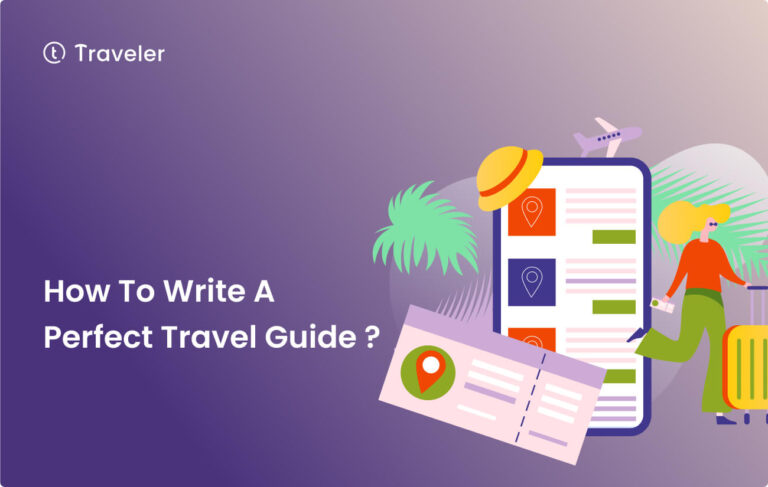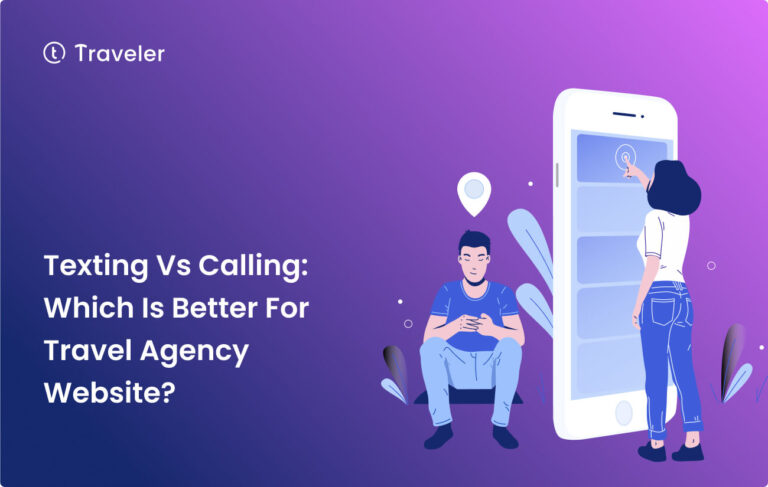6 tips for boosting more email opt-ins and promoting your travel business
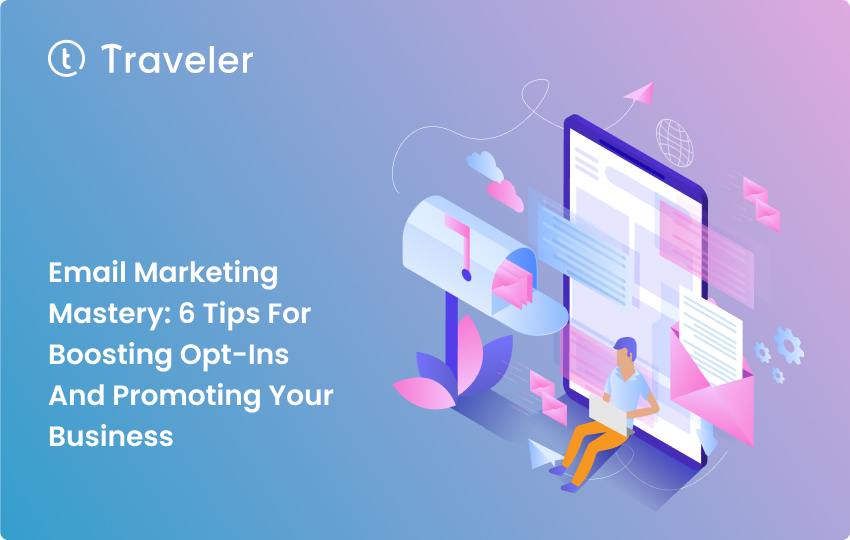
Are you looking for ways how to boost email opt-ins for promoting your travel business? Look no further! Growing your email list is crucial for any eCommerce business, especially in the competitive travel industry.
Email is the most effective form of communication and the best marketing channel for ROI. Therefore, it’s no wonder why businesses are constantly looking for ways to improve their email marketing strategy.
Whether you’re just starting out or have been in the game for a while, there’s always room for improvement. In this article, we’ve compiled a list of the six best tips for boosting email opt-ins and promoting your travel business.
As an email marketing tool, we’ve sent and studied billions of emails while working closely with eCommerce businesses. As a result, this gives us unique insights into effective list-building methods. Ready to take your email marketing to the next level? Let’s dive in!
Create Compelling Lead Magnets
What are lead magnets?
A lead magnet, also known as a freebie, freemium, or bonus download, is a powerful tool that can help you grow your customer base. It’s an irresistible offer that encourages website visitors to provide their name and email address in exchange for something valuable and relevant to their interests.
Some examples of lead magnets include ebooks, brochures, checklists, templates, exclusive content, and more.
But what’s the purpose of offering something for free? Let’s take a look at the next section!
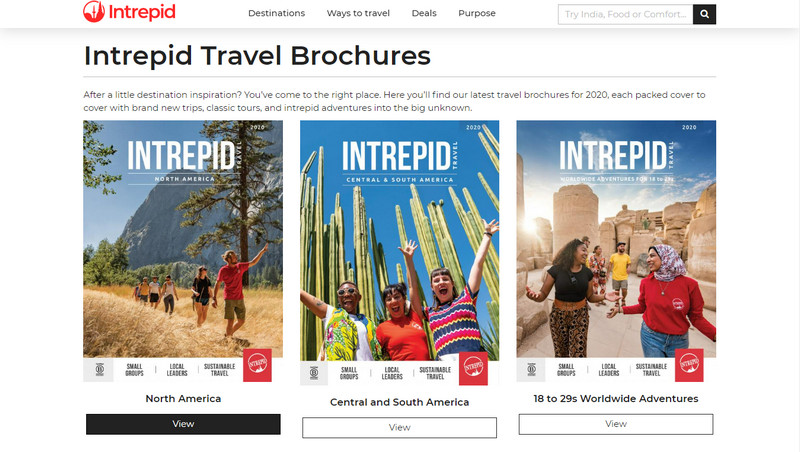
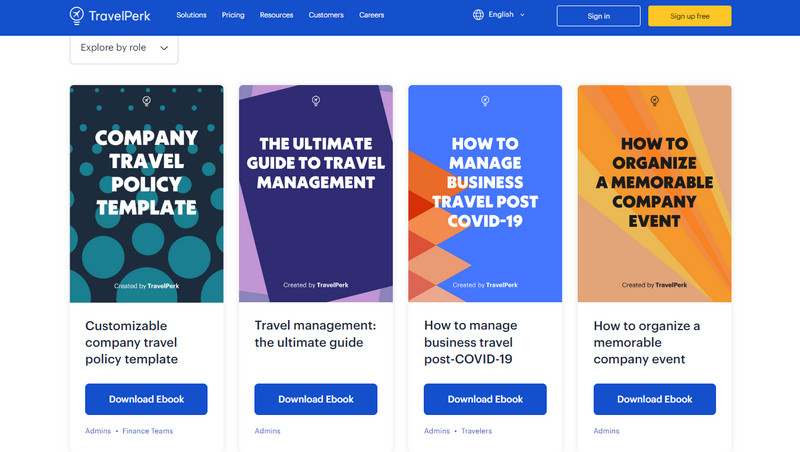
Why do you need lead magnets?
The benefits of having a solid lead magnet strategy are endless. You can boost your email list, increase email opt-in rates, and establish yourself as a thought leader in your travel industry. Plus, it’s an excellent way to show your audience that you’re invested in their success.
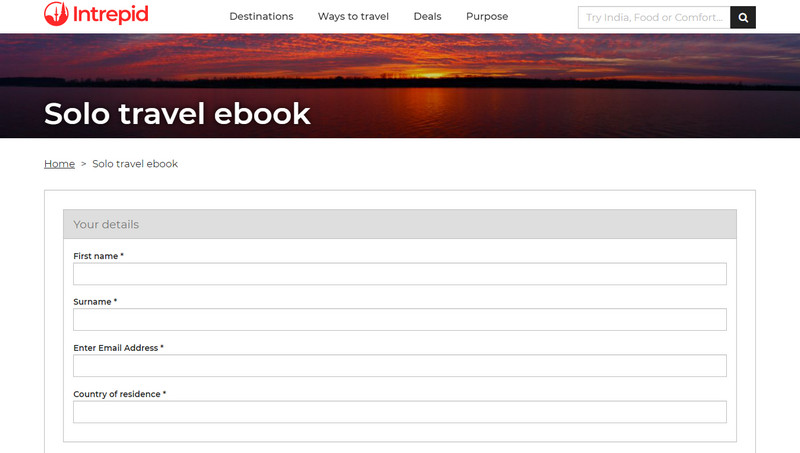
A real-life example of lead magnets
A tour company called Intrepid Travel creates free brochures to provide the ultimate guide to the Best must-visit destinations in the world. The brochures feature stunning photos and detailed descriptions. They cover intrepid adventures into the big unknown about popular travel destinations such as Machu Picchu, the Great Barrier Reef, and the Serengeti National Park.
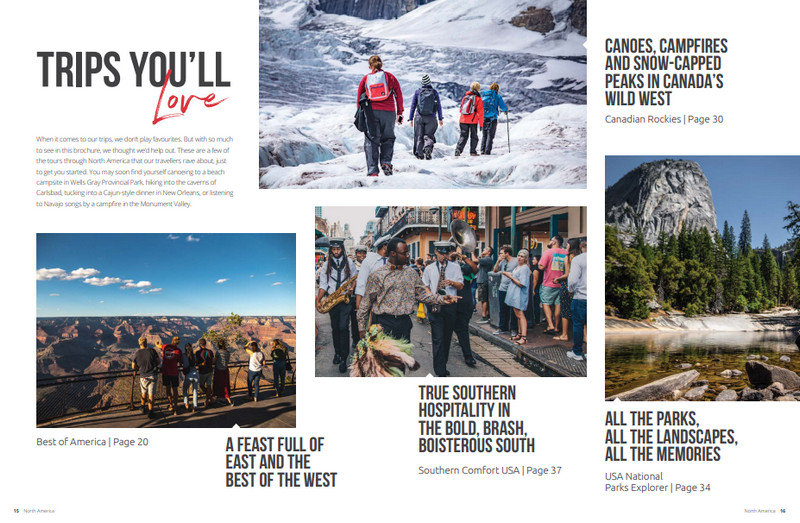
To download the e-book, potential customers are required to sign up for Intrepid Travel’s email list. By offering a valuable resource, the company is able to attract potential customers who are interested in travel and looking for inspiration on their next trip.
Once customers sign up for the email list, Intrepid Travel can send them regular newsletters with travel tips, special offers, and information about upcoming tours. By building a relationship with customers through email marketing, the company is more likely to convert them into paying customers in the future.
Optimize Sign-Up Forms
Why does your travel agency need sign-up forms?
Sign-up forms are the travel agency’s secret weapon when acquiring new customers. They’re the gateway to unlocking a world of travel possibilities and generating revenue. But not all sign-up forms are created equal!
A poorly designed form can send potential customers bouncing away from your website faster than you can say “bon voyage”. In fact, the bounce rate of sign-up or landing pages can be over 80%!
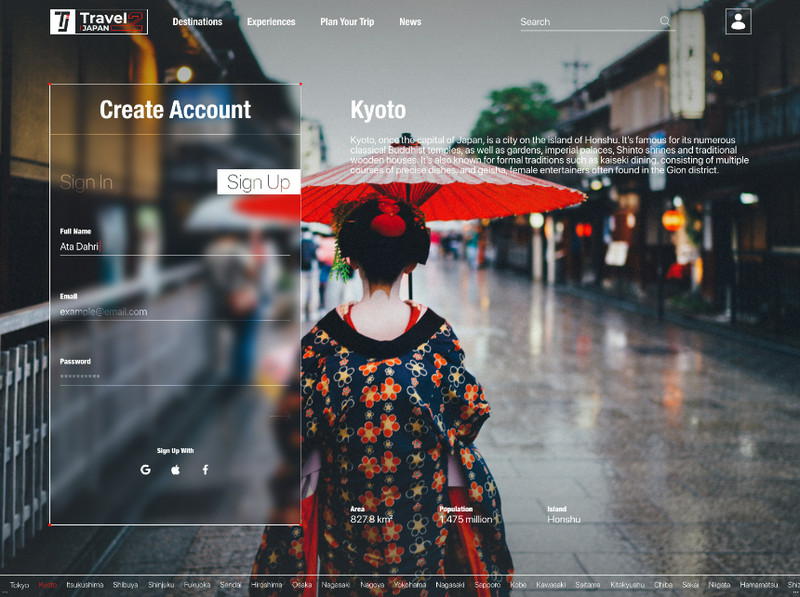
On the other hand, a stunning signup form can lead to increased engagement, higher conversions, and, ultimately, more bookings. That’s why it’s crucial to have a sign-up form or sign-up page and ensure that the sign-up process is as smooth as a tropical breeze.
So, how can you create a signup form that stands out from the crowd? The secret lies in the below part.
Best practices for designing sign-up forms
Streamline Design for Focus
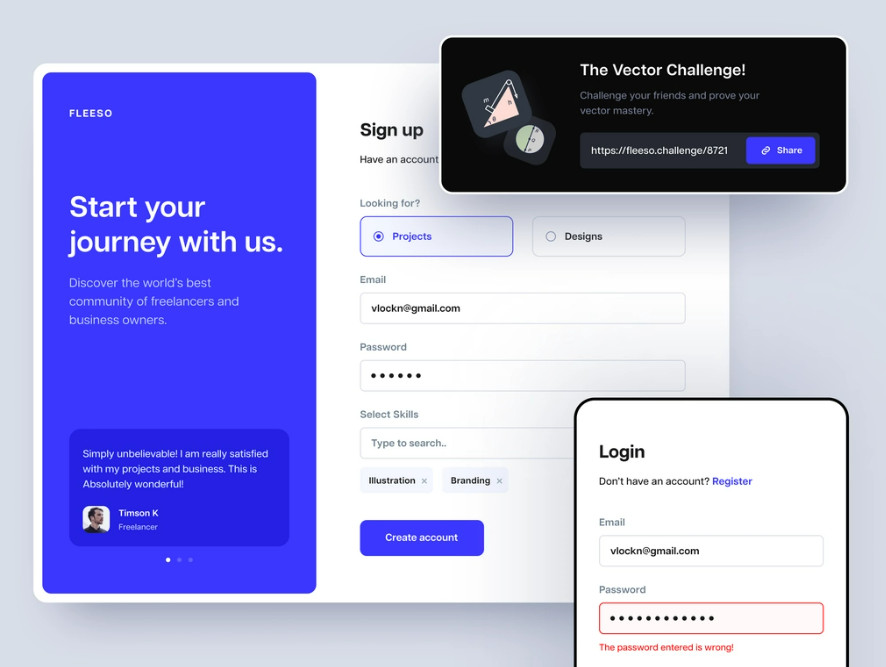
Simplify Form Fields
As a travel business, we understand that signing up for a new service can sometimes overwhelm customers. That’s why we recommend keeping your sign-up forms clean and straightforward to ensure everything is clear.
Of course, depending on the specific needs of the travel industry, tour operators may need to collect additional information. But sign-up forms should only ask for the essentials, such as their name, email address, and password.
You should follow the example of companies like this sign-up form. It only requires a phone number for verification.
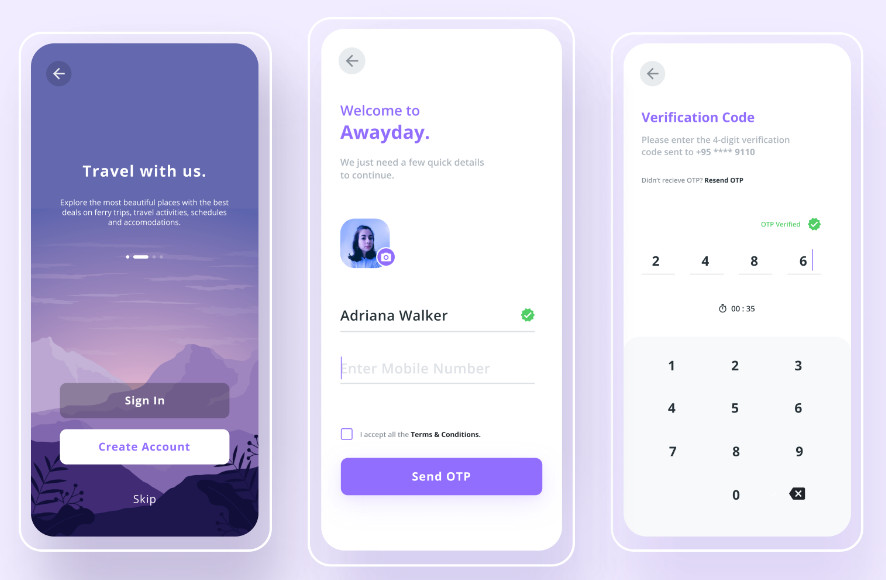
Set Clear User Expectations
In addition to streamlining the process to reduce obstacles, it is crucial to establish appropriate expectations. You should provide clear guidance on the requirements and duration of the procedure to give users sufficient context.
Besides, it is also essential to clarify the purpose of requesting specific data, such as payment details, identification numbers, and other personal information, and how it will prevent users from feeling uneasy and abandoning the process.
Offer Social Login and Auto-Fill Options
One effective way to improve your sign-up process is by enabling users to log in with their social media credentials, such as their Google or Facebook (Meta) account.
Research indicates that users are more likely to sign up for your travel service if they can use their existing login details instead of filling out a new form.
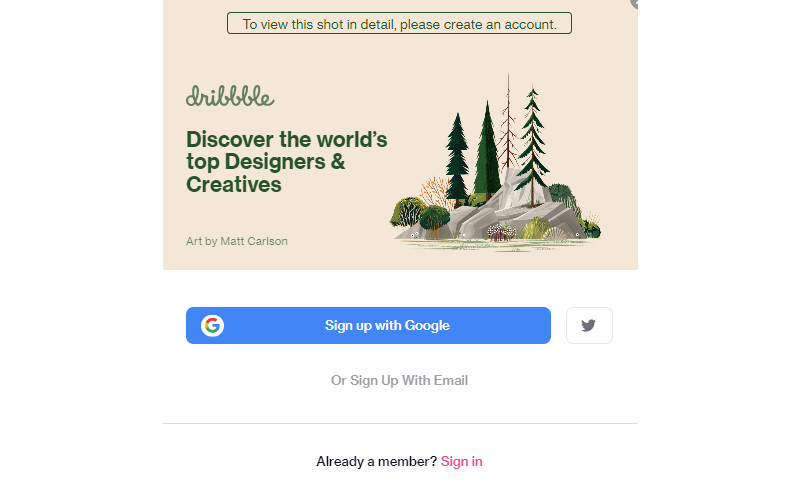
5. Optimize Sign-Up Page for Mobile
Over the past few years, there has been a steady rise in mobile usage. Studies indicate that 50% of B2B inquiries and up to 60% of page views in Q4 2022 were made on mobile devices. Hence, every travel agency must optimise your sign-up form for mobile devices. Otherwise, an inadequately designed mobile page may deter users from completing the sign-up process.
A real-life example of leveraging sign-up forms
Agoda has optimized its sign-up form by prominently displaying it on their website. The company provides first-time sign-up VIP members with a 25% discount and other offers.
Additionally, Agoda offers everyone the opportunity to become a VIP member without having to pay or spend money on their travel services.
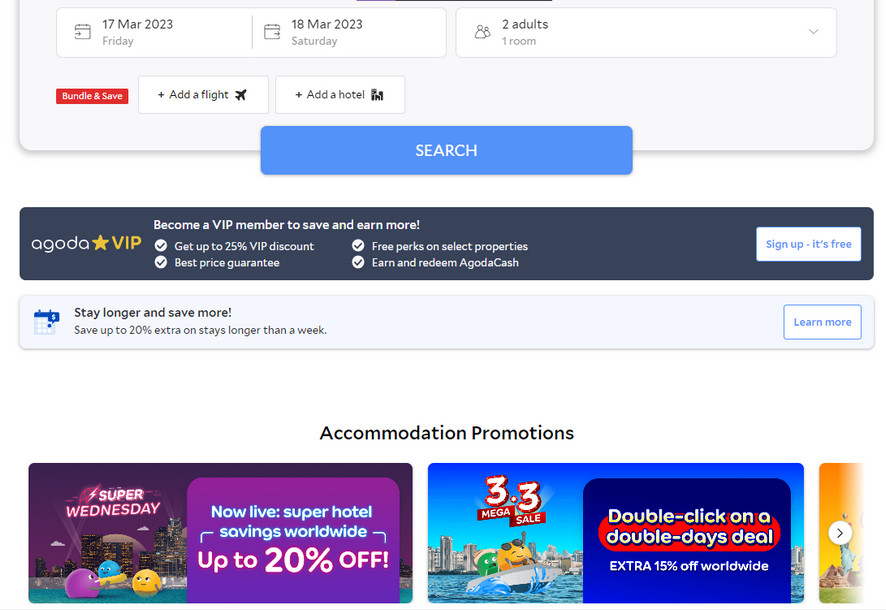
Provide Exclusive Offers and Discounts
Why is providing discount emails so necessary?
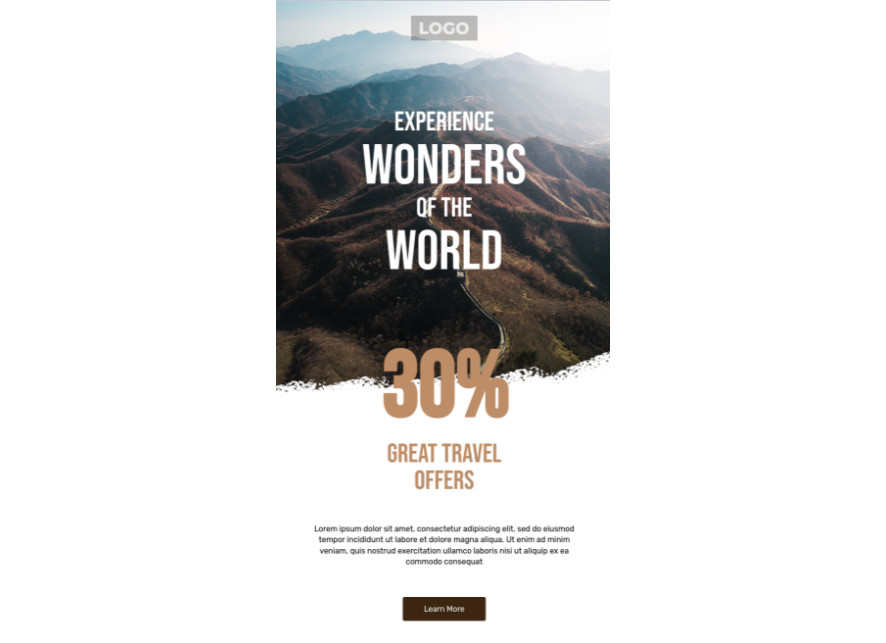
Discounts are a crucial tool for driving revenue, winning new customers, and re-engaging existing ones in both B2C and B2B industries, and this holds true for the travel niche as well.
As a marketer or salesperson in the travel industry, it’s likely that you’ve had to draft an email or two informing clients about a discount offer.
Discount offer emails in the travel industry are used to inform customers about special discounts on specific travel products or services. These emails can either be generic, such as a seasonal sale on Black Friday or Cyber Monday, or unique and tailored to an individual customer’s preferences,
A Real-Life Example of How to Effectively Offer Discount Emails
Marriott Hotels, a global hotel chain, regularly sends out discount offer emails to their subscribers. In one such email campaign, Marriott offered a 20% discount on room rates to their subscribers who booked directly through their website.
The emails included appealing visuals of their hotels, highlighting the exclusive discount offer. Additionally, they provided information about the loyalty program benefits of booking directly with Marriott. This campaign helped Marriott increase bookings and revenue by targeting their loyal subscribers with personalized and enticing offers.
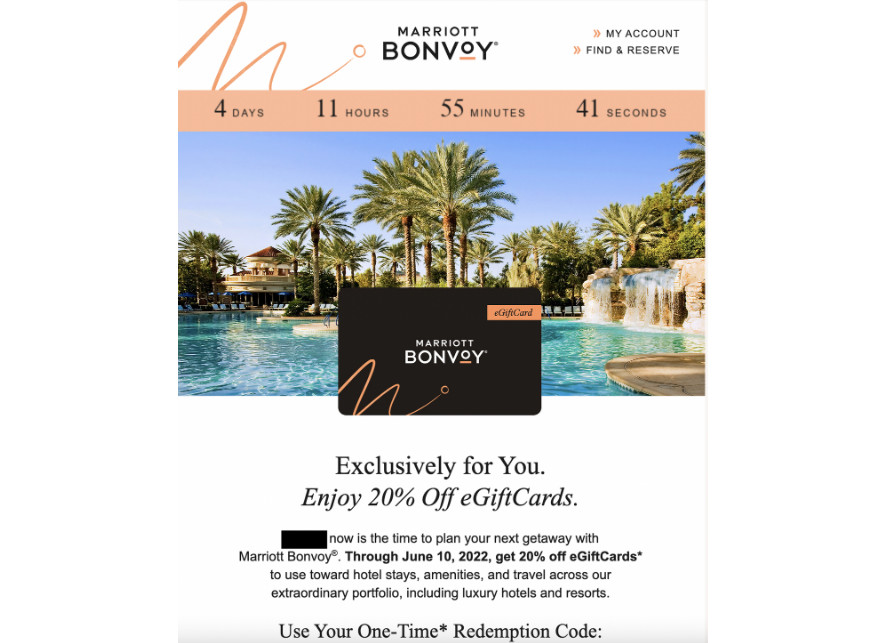
Use Social Proof and Testimonials
Why does your travel agency need social proof and testimonials in email marketing?
In the travel industry, social proof is crucial in influencing customers’ purchasing decisions. When booking a hotel, travellers often rely on TripAdvisor reviews, while recommendations from friends may influence their choice of travel experiences.
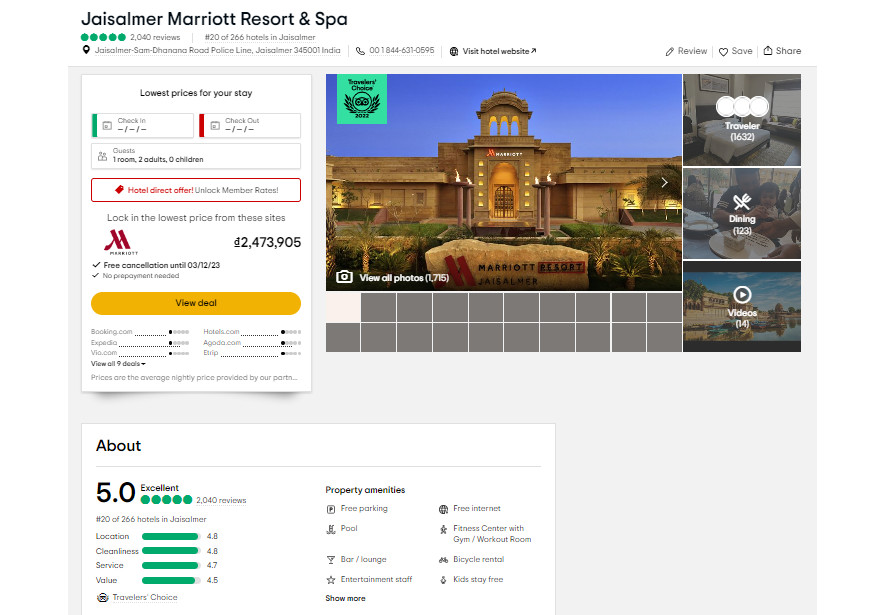
With social media platforms like Facebook, Twitter, and Instagram dominating our online lives, it’s becoming increasingly important for travel brands to establish a strong social media presence.
By showcasing positive customer experiences and engaging with followers, travel brands can effectively leverage social proof to attract new customers and build brand loyalty. And when potential customers see their friends and family interacting with a travel brand on social media, they are more likely to explore and book travel experiences with that brand.
Best practices for using social proof and testimonials in emails
Show off your numbers
One of the best effective ways to boost your credibility is to highlight social media followers or customer numbers in your travel marketing emails.
Everyone wants to be part of something big. Therefore, you can feature impressive figures in your marketing emails. Customers will trust your brand more as it implies that many people have tried and loved your product/service.
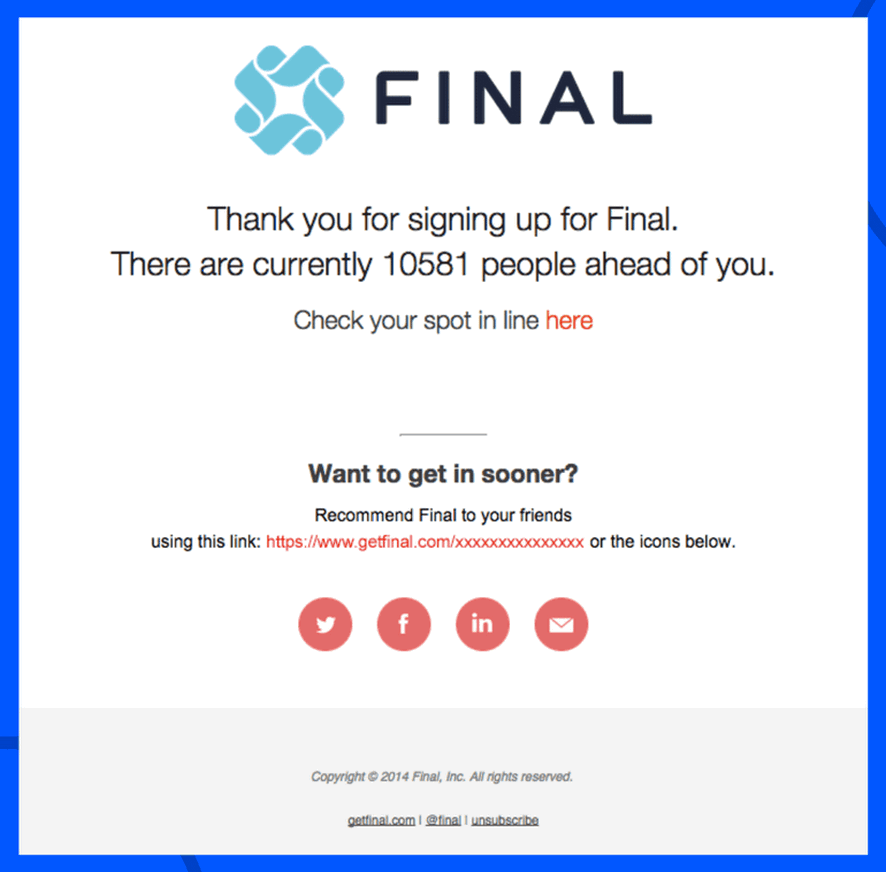
Let your customers do the talking
User-generated content is a goldmine for travel businesses because it’s authentic and unbiased. In fact, positive reviews can sway 91% of consumers to use your business, while negative reviews can turn off 82%. Including ratings and reviews in your email marketing is a surefire way to leverage social proof.
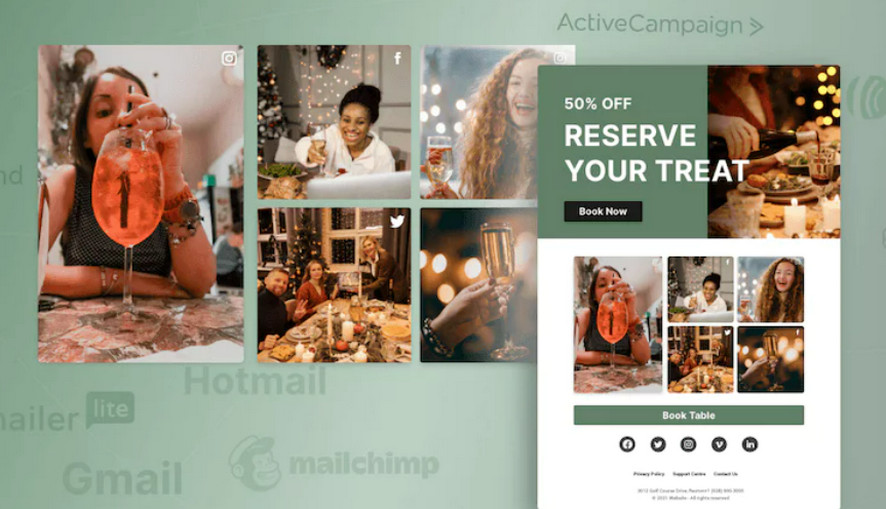
Brag about Media Features
Share Customers Success Stories
Customer stories can be particularly powerful. They allow prospective travellers to imagine themselves experiencing the same adventure or luxury and provide them with a sense of reassurance that they will have a positive experience.
Consider including a case study for higher-priced packages or more involved trips. This will give potential customers the confidence they need to make a commitment. Case studies can showcase all the best aspects of your offerings, highlighting how real people have used your services to achieve their dream vacation.
When prospects can see proof of others’ successful experiences with your company, they are more likely to want to book with you and have a similarly positive experience. So don’t underestimate the power of customer stories in your travel marketing campaigns!
A Real-life Example of Using Social Proof and Testimonials to boost email opt-ins
As mentioned, travellers like us rely greatly on reviews to choose where to stay. So, could you lend a helping hand? How about putting together an email filled with happy customer testimonials and a link for subscribers to read more? It’s a great way to share the love from your customer about your travel services!
Fairmont Hotels has adopted this approach and sends testimonial emails encouraging subscribers to explore real guest stories through a call-to-action (CTA).
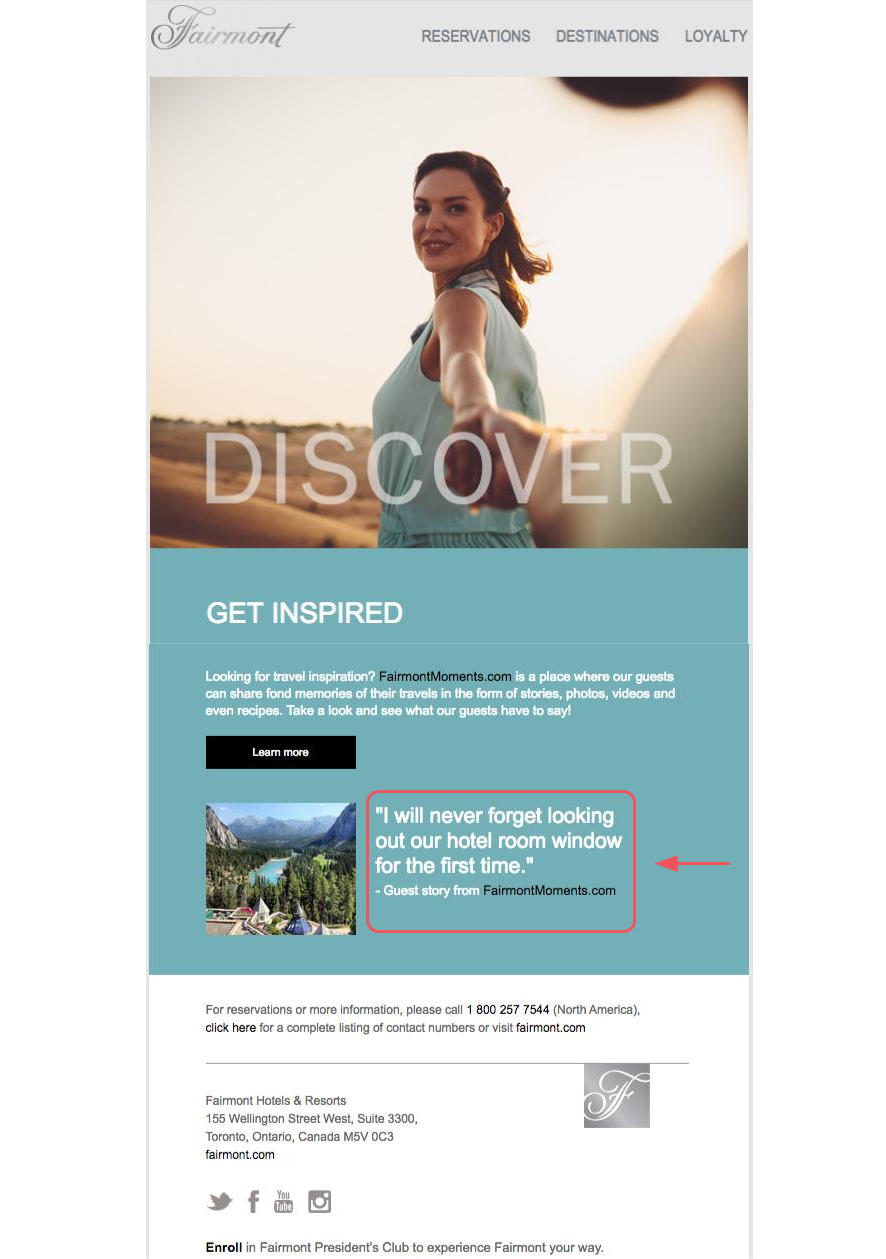
Segment Your Email List
What is the segmented email list? Is it important?
When it comes to travel email marketing, customer segmentation is key. It’s all about breaking your customer base down into smaller, more specific groups. Then, you can send targeted messages that really resonate with each group.
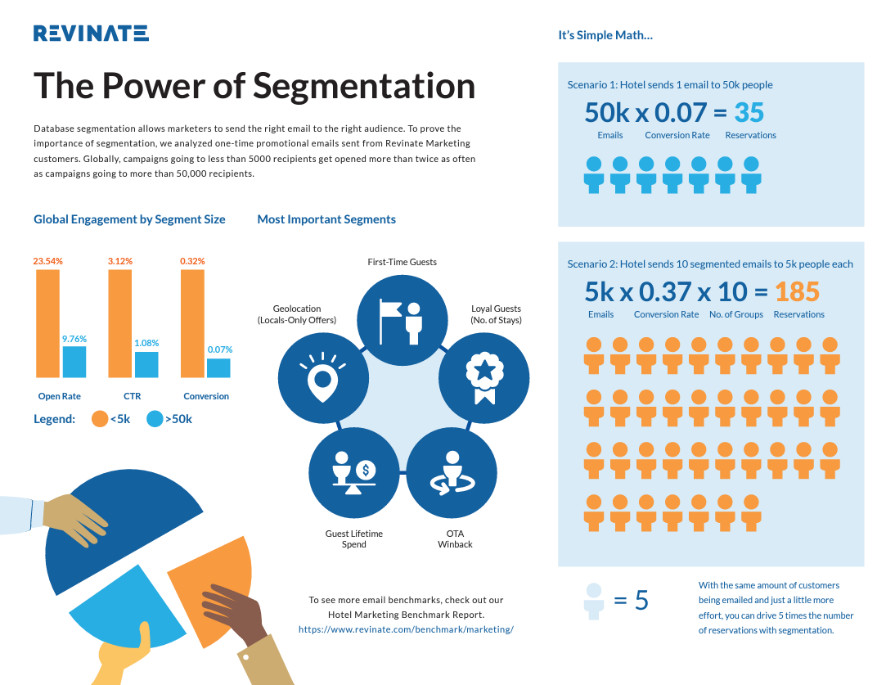
There are lots of different ways to segment your customers, like by their location, booking history, or even where they are on their travel journey. By doing this, you can not only make your marketing more effective, but you can also keep a close eye on metrics and see which segments are bringing in the most business.
For instance, let’s say you have a customer who booked a room at your hotel for their honeymoon. You could create a special “wedding” segment and send them exclusive offers to make their stay even more romantic.
Or, if you have a customer who frequently stays with you for work, you could put them in a “loyalty” segment and reward them for their continued support.
The bottom line is that customer segmentation is a super friendly and effective way to connect with your guests and make their stays even better.
4 Best practices for segmenting email lists
Building Your Travel Email List with the Right Contacts
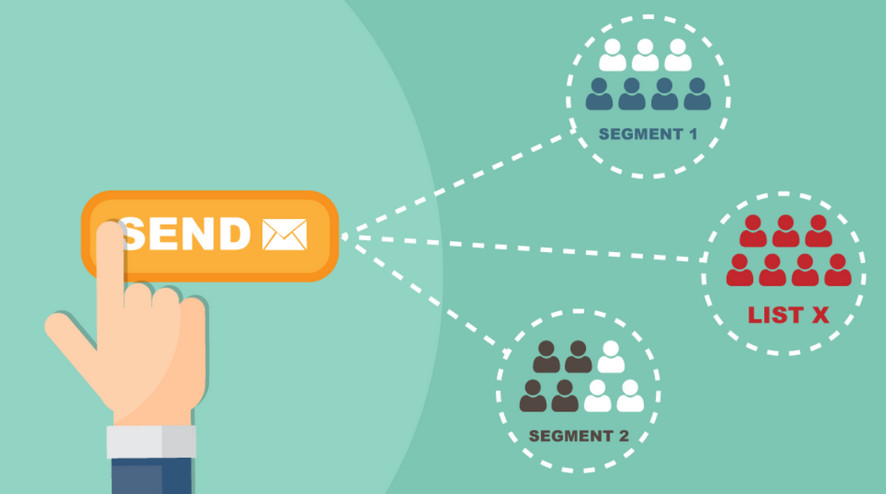
Simplifying Your Travel Email Marketing
Simplicity is key when it comes to listing segmentation, especially if you’re new to it. To start, aim for 2-3 segments that will have a significant impact without adding unnecessary complexity.
A good starting point is to consider your key buyer personas and identify their main differences, like business type, location, or goals. By focusing on a few key segments, you can create targeted and effective travel email campaigns without overwhelming yourself or your audience.
Labelling New Travel Contacts for Better Communication
It’s essential to start segmenting your contacts as soon as they enter your CRM or email marketing tool. This can be achieved by creating custom properties or listing memberships based on their demographics, behaviour, contact details, and communication preferences.
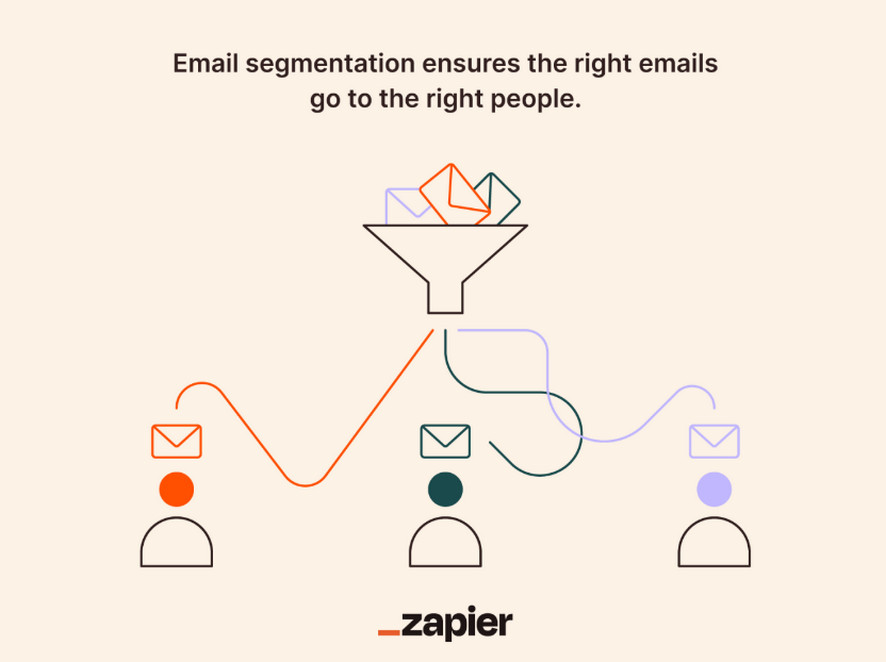
Remembering User Preferences in Travel Emails
Personalize Your Emails
Why do travel agencies need personalization emails?
Put yourself in your customers’ shoes and think like a traveler. Would you be interested in an email promoting a destination that doesn’t match your preferences?
For example, if you can’t stand hot and humid weather, it would be a waste of time for you to receive promotions for tropical destinations. That’s why every email marketer in the travel industry must understand their customer’s preferences before reaching out to them. Trust us. Personalized emails are much more effective than generic ones!
Best practices for personalizing emails
Are you looking for ways to make your emails more personalized? Here are some tips to get you started:
Get to know your audience: Collect information about your subscribers and use it to create targeted campaigns that speak to their interests and needs.
Use segmentation: As mentioned earlier, segmentation is one of the main keys in helping target the right person with the right content. Divide your email list into smaller groups based on factors like past purchases, location, or email engagement. Then, tailor your content to each group’s specific interests.
Personalize your subject lines and email content: Use your subscribers’ names and other relevant information to make your emails feel more personal and engaging.
A real-life example of personalization to boost email opt-ins
To send travel deals that really resonate with your audience, you should pay attention to their preferences and segment your contact list accordingly.
You can group your contacts based on their behavior, such as the links they click in emails or their previous purchases.
By doing this, you can provide your subscribers with tailored content, increasing the chances of them taking action. Just look at how Flight Centre increased its conversion rate by sending targeted emails about Florida vacations to subscribers who had previously shown interest in that destination.
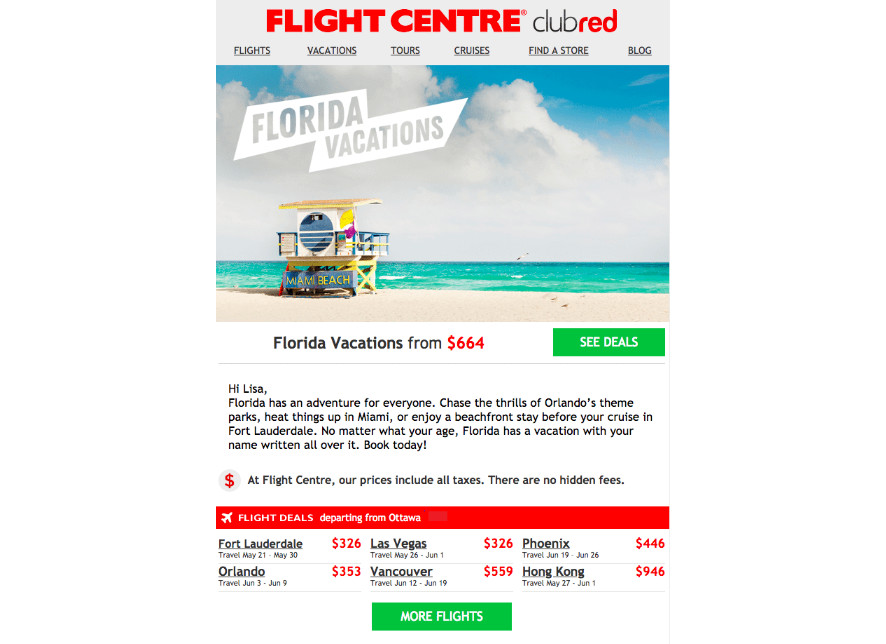
Conclusion
Thanks for reading through these 6 tips to help you boost email opt-ins and promote your travel business! With these strategies, you’ll be well on your way to growing your email list and reaching more potential customers.
Remember to offer something valuable, optimize your sign-up forms, promote your list on social media, and use pop-ups and exit-intent forms strategically.
And don’t forget the power of personalization in your email campaigns! By following these best practices, you’ll be able to engage with your audience and build stronger relationships with them. Happy emailing!
